The future-living lab SPACE10 is thinking big in its aim to create a better everyday life for millions of people while also tackling major issues such as climate change, overpopulation, sprawling urban growth and lack of food security – all while remaining artistically free and light in spirit. Founder Carla Cammilla Hjort tells us about her vision for a future that’s already here.
Words
Photos
Marie HaldFor a future-living lab, SPACE10 looks pretty contemporary. It’s located in Copenhagen’s Kødbyen, a former meatpacking district brimming with wine bars, restaurants and offices for young creatives. The open-plan office, abundance of plants, and the light, wooden furniture would fit right in at the strikingly similar co-working spaces that have popped up everywhere from Berlin to Bali in recent years. A rainbow flag flies from the top of the corner building occupied by the lab and the two dozen team members look more like urban hipsters than nerdy futurologists.
SPACE10 is funded by IKEA and its founder Carla also looks the part of a contemporary creative rather than the sci-fi-obsessed scientist you might expect to lead a future-living lab. But the future is a lot closer than we may think and there is nothing sci-fi about it, she suggests.
‘I like the saying that the future is already here, it’s just not evenly distributed,’ says Carla, quoting the author William Gibson, who coined the term cyberspace in his noir, sci-fi novels. Like him, Carla is trying to see into the future – but instead of trying to predict it, she’s trying to shape it. ‘Most of what we do here at SPACE10 isn’t all that futuristic or sci-fi-like, at least not to me. What we work with is stuff that’ll be part of our everyday lives in five to 10 years.’
The lab’s work is also less futuristic than one might imagine: SPACE10’s core ethos swivels on the idea of playing around with current trends and coming up with innovative ideas, all within the field of how people live, now and in the future.
While many Copenhageners will recognise Carla as one of the city’s most celebrated DJs, companies know her for her ability to create communities. She has also spent a year in an ashram, was part of the lesbian pop duo Fagget Fairys, and launched a successful festival in Copenhagen. That might not seem like the most likely résumé to land you a gig as the vision director of a well-funded future-living lab, but to Carla – and to the chiefs at IKEA – it made perfect sense.
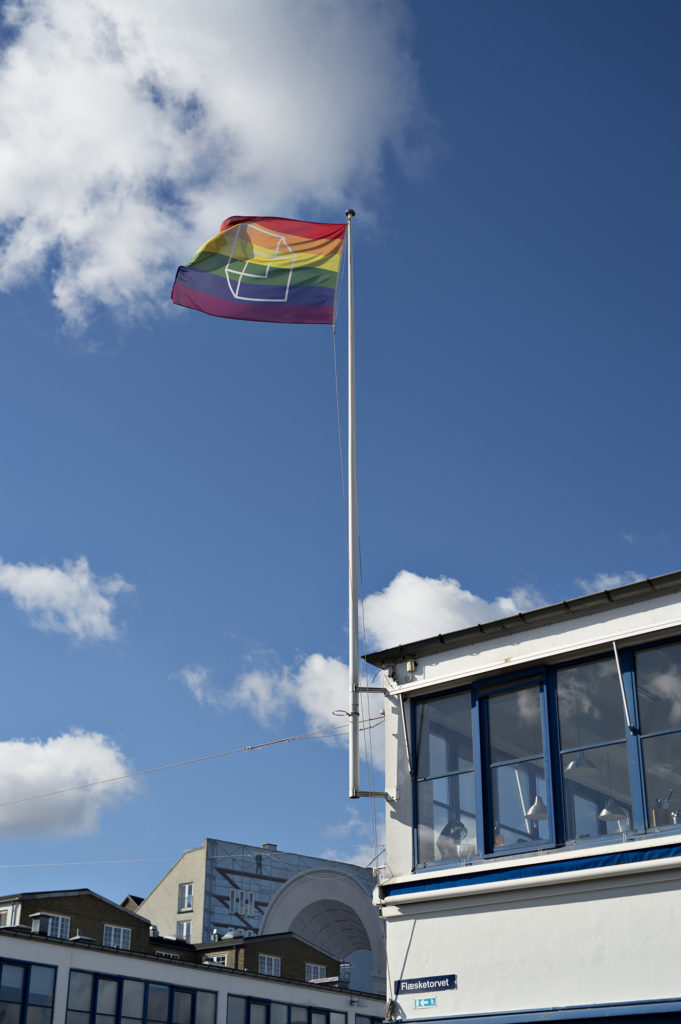
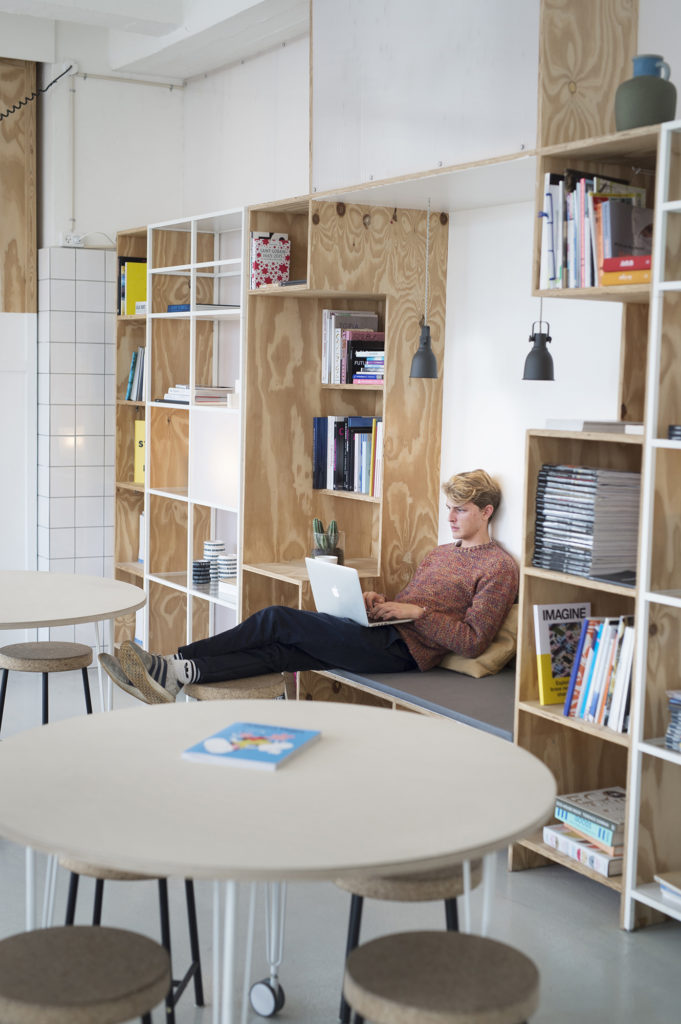
Carla first collaborated with the Swedish furniture giant in 2014, when she was asked to give a talk on building community. It went so well that she was brought on board to design a line for IKEA through her art collective, ArtRebels. Carla founded the collective in her twenties, when she was becoming restless with working as a DJ. Her weekends were packed, but her weekdays were empty, and she decided to launch ArtRebels as a way to help less business-savvy artists make a living through creative projects. The collective grew, and soon ArtRebels was generating creative and cultural concepts for brands, municipalities and even Mary, the Crown Princess of Denmark’s foundation, as well as working as agents for rising artists in Copenhagen and running the popular festival, Trailerpark.
Creating the colourful Bråkig (Swedish for rascal) collection for IKEA was outside of the creative studio’s comfort zone, but it was a roaring success. Only 18 months after their initial meeting, Torbjörn Löof, who had become CEO of the Inter IKEA Group in the meantime, asked Carla to come up with a bigger idea.
‘Some might think the visions are naive, but we’ll have to push the boundaries for what’s possible if we want to keep up.’
‘He called me from an airport, and at first I thought it was just about congratulating me for the ArtRebels collection. But then he said that he’d gotten a new job, that he wanted to create a better IKEA for the future, and that he’d come to think of me. There was no plan and no agenda, he just wanted me to think about it and get back to me. I immediately knew that it could be the beginning of something big,’ she recalls.
Carla hung up the phone, and then got to work. For the next fortnight, she holed up with her business partner Simon Caspersen. They tirelessly researched, brainstormed, and generated ideas. Eventually, they came up with the idea of a non-profit, future-living lab. Simon was on a sabbatical from his job at ArtRebels to pursue his passion for documentary film-making, but Carla asked him to reconsider the career change. ‘I told him I wanted to pitch a three-year project and asked if he’d be on board with that. Then we flew to the Netherlands to present the idea.’
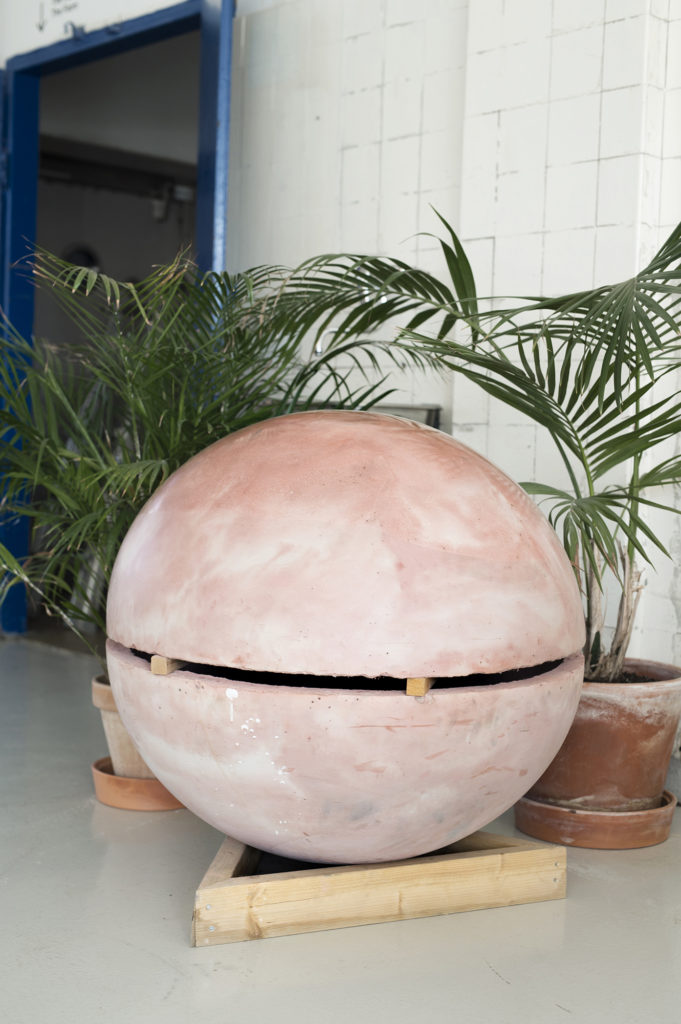
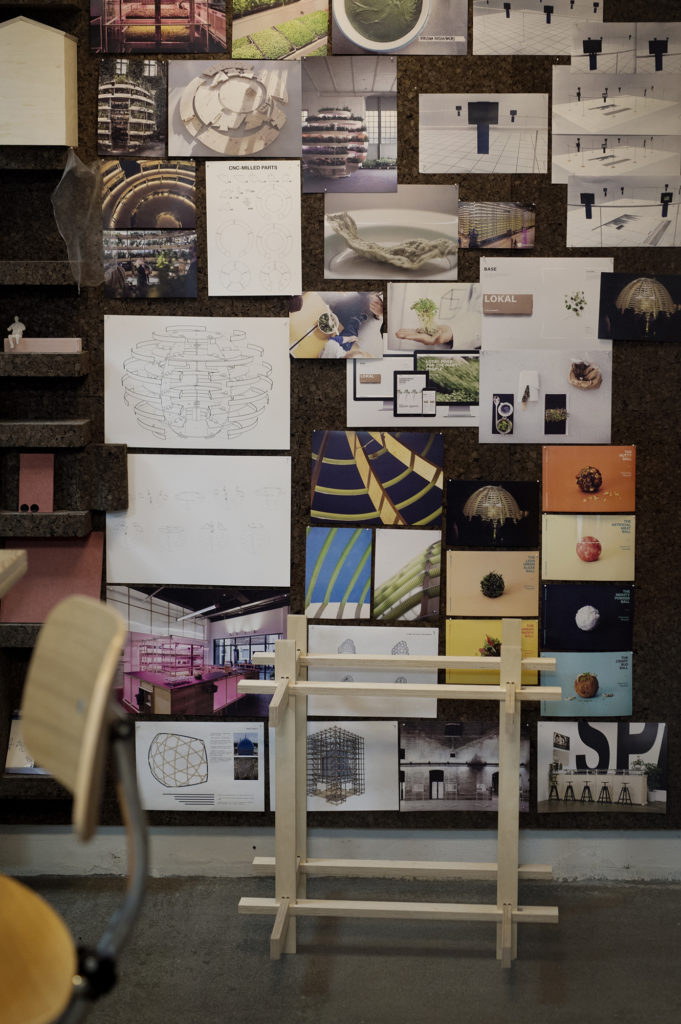
Four years later, Carla and Simon give us a tour of the bright, airy offices in Copenhagen, which take up three floors of a repurposed industrial building. The three-year contract with IKEA has been prolonged indefinitely, and the team has grown to more than 20 employees. In addition to the permanent staff, SPACE10 invites specialised teams to join the lab for short-term residencies. The results of the innovation lab have garnered worldwide attention. IKEA is just one of many large companies to launch innovation labs, which tend to focus on how the business model of the company might be disrupted and how the company can be part of disruptive innovation instead of becoming a victim of it.
IKEA had identified five macro-trends likely to affect its business model, and based on those, Carla and her crew – Simon, Guillaume Charny-Brunet and Kaave Pur – decided to focus on three main areas. SPACE10 would examine the potential as well as the challenges posed by circular economies, digital empowerment and social interaction. The core element of the quartet’s work is also one of the main ideas employed by IKEA in its marketing material: they want to create a better everyday life for as many people as possible.
While the team has the freedom to pursue whatever projects they find most interesting, they’ve chosen to focus partly on areas where IKEA is already an active player.
’We have been pragmatic when choosing the research areas, but mostly because it made sense to us and aligned with our own interests,’ Carla says. ‘As an example, we knew that IKEA focuses more and more on food, so it made sense for us to examine how we can ensure food security and sustainability in the future, and when we learnt that IKEA owns one of Europe’s biggest property development companies, it made sense for us to focus more on shared living. We focus on the areas that seem the most relevant to us, but those are also areas where it might be relevant for IKEA to invest.’
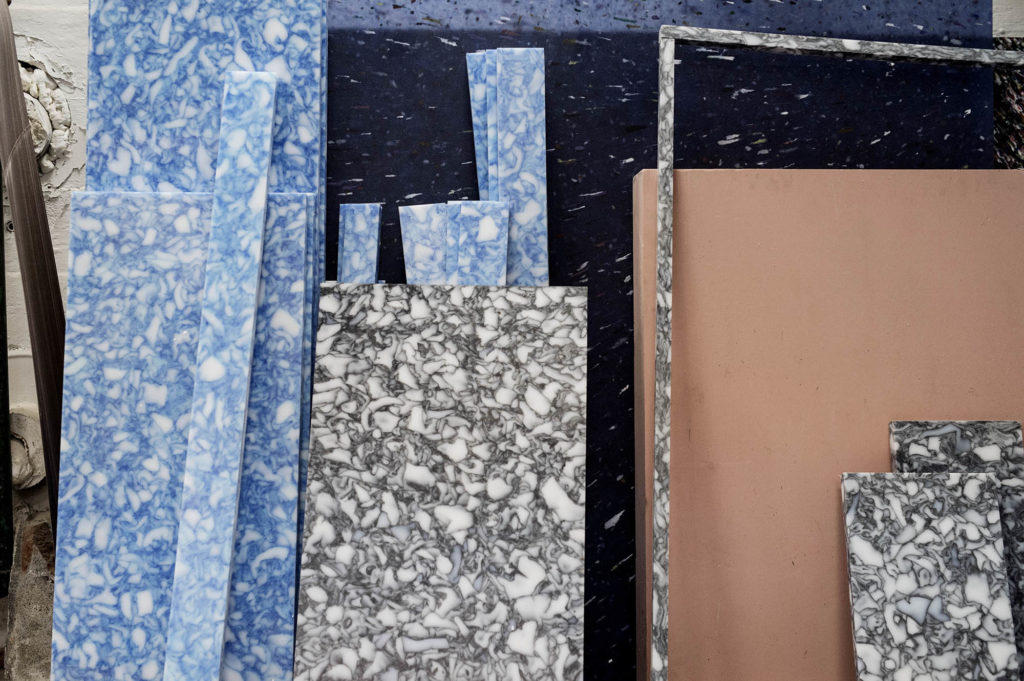
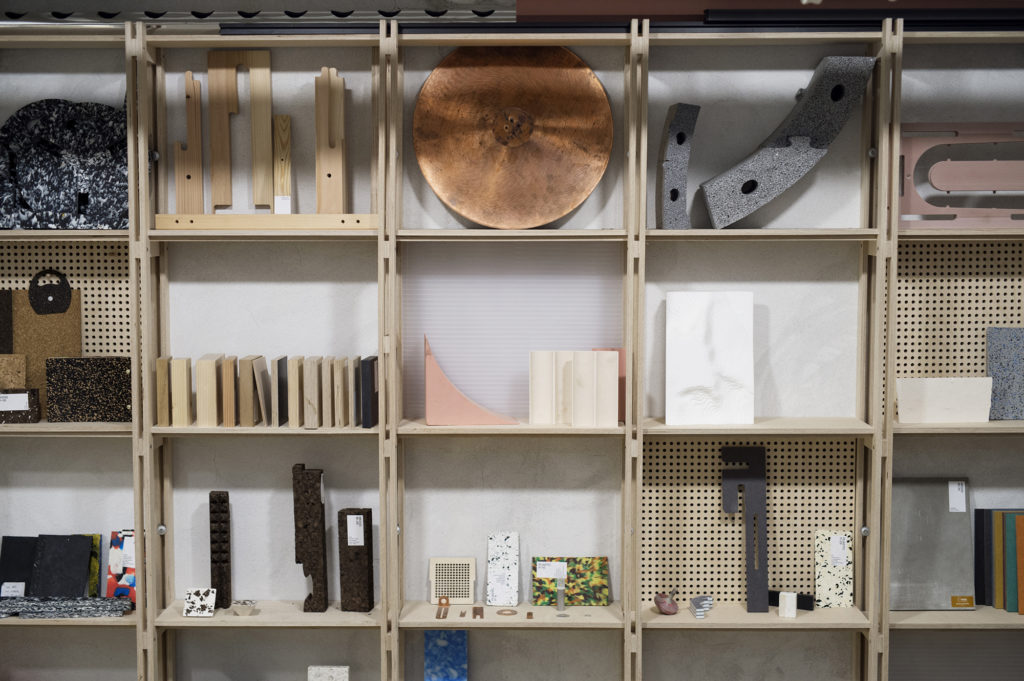
Within these fields, the team has developed several projects that have sparked the interest of global media. Headlines were made when SPACE10 presented three potential new versions of the popular, traditional meatballs sold at IKEA; one option was made out of insects, another from urban farming produce, and the third comprised general food waste. A large research project, consisting of a playful, colourful website with a survey that examined people’s attitudes to co-living, also caught attention. And when SPACE10 presented their vision for self-driving cars, it wasn’t those sleek, robotic machines shown by other innovation labs; they had recast the self-driving vehicle as a room on wheels. In the research report on self-driving cars, the lab presented seven prototypes, ranging from stylish living rooms to farm stands, medical clinics and mobile offices.
SPACE10 also experiments with hydroponic and aquaponic farming in its city basement. The lab has presented a vision of low-cost, sustainable homes in the form of building blocks that can be printed and adjusted to the environment, and its team mulls over concepts such as co-living – which has been thriving in communities catering to remote workers in recent years – could be recast in Asian megacities that are in desperate need of affordable housing. That project still hasn’t been presented to the public, but the crew is hopeful.
As SPACE10 has been set up as a non-profit, funded entirely by Inter-IKEA-Systems, the global owner of the brand, concept and franchise IKEA, there’s no pressure to make money. This has freed the team from the constraints of commercialism and transformed their lab into a playground for creative minds.
‘It’s a huge plus that we don’t have to make money,’ says Carla. ‘It means that we’re able to really think ideas through instead of having to implement them immediately to fund ourselves.
‘One example is co-living – so many hip, new places are popping up, but it seems like a lot of them haven’t done their research when it comes to figuring out how to actually create a community and avoid the social isolation many people move there to avoid. With that being said, our contacts at IKEA probably wouldn’t mind if we create something that can actually make money, and they’re ready to invest when we present them with the right ideas.’
The absence of commercial pressures has also had an impact on how creatively – some would perhaps say childlike – the team can be.
‘We are allowed to focus on the solutions more than the problems and to have more positive visions for the future. Some might think the visions are naive but we’ll have to push the boundaries for what’s possible if we want to keep up with the development. And of course the aim is to present new ideas and concepts to IKEA that they’ll invest in going further – so far it seems like things are moving in the right direction and multiple projects are getting closer to being implemented,’ Carla says.
‘There’s a huge shift happening when it comes to issues such as ownership.'
She knows that convincing IKEA to pursue some of the ideas created by her lab is only the beginning. The citizens of the world will also have to adapt to a future where there will be more people on the planet, where climate change will force us to live in a different way, and, especially in the big cities, where food security will become a concern for many more. In a lot of areas, however, the mental shift is already beginning to happen. More and more people – especially Europe’s youth – are reducing their meat consumption because of its environmental toll. How we travel and how often we use airlines has been a subject of debate in recent years. The explosion in the number of freelancers and remote workers has fuelled a reconsideration of the way that we work. And as rents rise in cities worldwide, increasing numbers are experimenting with shared living.
‘There’s a huge shift happening when it comes to issues such as ownership, which has been a very central factor in how we’ve lived and worked in the past,’ muses Carla. ‘For the past century, we’ve pursued this nuclear family model where we’ve isolated ourselves in the small boxes we call our homes, where we’ve all had to have another small box with wheels on it to get to the office, and where we’ve strived for stability when it comes to work. But it’s dawning on many that that way of living can be very isolating – it creates a bad infrastructure in the cities as well as loneliness. The problem has been there for a while, but these days you see a lot more people working on creating different solutions.
‘It’s the same with remote work. At first it seemed a bit radical, but now you see big companies allowing remote work. The way we’ve lived and worked for the past century has been breaking up, and we will all be forced to join the wave of change. Most of the solutions we’re looking for aren’t that futuristic or sci-fi, and a lot of them have already become mainstream. We’re just working to make them better and scalable.’
Find out more about SPACE10 at space10.io
